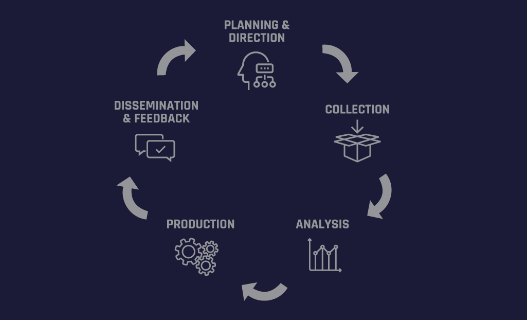Understanding the Cyber Intelligence Cycle
Cyber intelligence is the process of collecting, analyzing, and disseminating information about potential and actual cyber threats, vulnerabilities, and risks. The cyber intelligence cycle is a framework that describes the various stages involved in this process.
In this article, we will discuss the cyber intelligence cycle in detail, including its stages, and how it can be used to improve an organization's cybersecurity posture.
The Stages of the Cyber Intelligence Cycle
The cyber intelligence cycle consists of five stages: planning and direction, collection, processing, analysis and production, and dissemination. Let's take a closer look at each stage.
1. Planning and Direction: The first stage of the cyber intelligence cycle involves defining the scope of the intelligence operation, identifying the objectives, and determining the resources needed to achieve those objectives. This stage involves setting goals, determining priorities, and allocating resources.
2. Collection: The collection stage involves gathering data from various sources, including open-source intelligence, social media, and internal data sources. This stage is critical as the quality of the data collected will impact the effectiveness of the subsequent stages of the cycle.
3. Processing: The processing stage involves organizing and formatting the data collected in the previous stage. This includes cleaning the data, removing duplicates, and converting it into a format that can be easily analyzed.
4. Analysis and Production: The analysis and production stage involves examining the processed data to identify potential threats and vulnerabilities. This stage may involve the use of machine learning algorithms and other advanced analytics tools to identify patterns and trends in the data.
5. Dissemination: The final stage of the cyber intelligence cycle involves sharing the intelligence with relevant stakeholders. This may include cybersecurity teams, senior management, and law enforcement agencies. The dissemination stage is critical to ensuring that the intelligence is acted upon and that appropriate measures are taken to mitigate any identified risks.
How the Cyber Intelligence Cycle can Improve Cybersecurity
The cyber intelligence cycle is a valuable framework for improving an organization's cybersecurity posture. By following the various stages of the cycle, organizations can gather intelligence about potential threats, analyze the data, and disseminate the intelligence to relevant stakeholders. This can help organizations to identify and address potential vulnerabilities in their cybersecurity defenses, and develop more effective strategies to mitigate these risks.
In addition to improving an organization's cybersecurity posture, the cyber intelligence cycle can also help to identify potential threats and vulnerabilities in the broader cybersecurity landscape. By gathering and analyzing data from a wide range of sources, the cycle can provide insights into emerging cyber threats and help organizations to stay ahead of evolving risks.
Conclusion
The cyber intelligence cycle is a valuable framework for improving an organization's cybersecurity posture. By following the various stages of the cycle, organizations can gather intelligence about potential threats, analyze the data, and disseminate the intelligence to relevant stakeholders. By investing in cyber intelligence and following the cycle, organizations can stay ahead of evolving cyber threats and ensure the security of their networks, systems, and data.


Post a Comment for " Understanding the Cyber Intelligence Cycle"